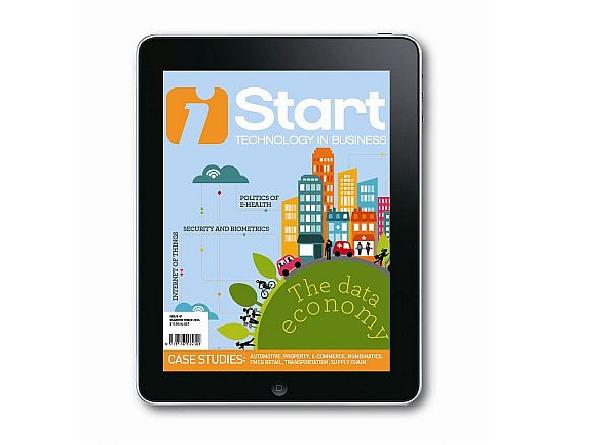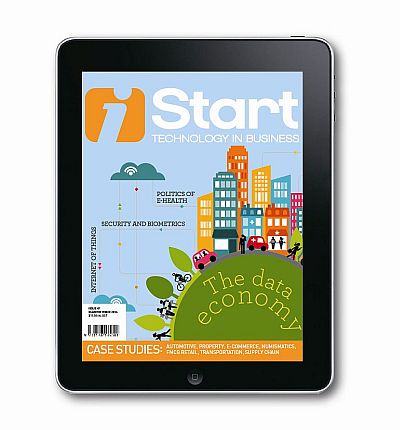Published on the 01/08/2014 | Written by Clare Coulson

I am an unrepentant fan of the internet of things. Day-ta (or dar-tah, however you may pronounce it), is flooding the world by the petabyte and actually becoming useful thanks to the connectivity of things, the data they collect and ubiquitous cloud computing… [View emag]
Inside: Features: The internet of things (what’s behind the buzz of the IoT), How to plug into the internet of things (what’s involved in setting up an IoT solution), Analytics untangled (what’s what in the data domain), Scanning the biometrics market (the sci-fi world of security analytics, biometrics and behaviourmetrics), The politics of e-health (politics in the e-health sector), Defining the connected living market (the future of the connected living market). IT success stories by industry: Government, Retail, Numismatics, Automotive, Transportation, Regulatory Inspections FROM THE EDITOR: One field where IoT is set to make a major difference is in healthcare. The ‘quantified self’ is not only helping fitness enthusiasts to monitor their health but is also providing the medical profession with remote patient monitoring capability. Unfortunately, for all the exciting possibilities, technological progress in the healthcare system is often hampered by politics. We asked James Riley to investigate New Zealand’s e-health ecosystem and the politics that surround it, and while the overall report card is positive, he dug up some quite frightening revelations. All of these advances are only possible if you have a laser eye on the specific datasets that are collected and used. New Zealand Rugby’s senior scientist Dr Ken Quarrie demonstrates exactly that in explaining how he uses business analytics and visualisation to help current and future All Blacks, their coaches and selectors, improve their game. The hidden patterns and relationships that are buried in mounds of unstructured ‘big data’ need smart software to be uncovered. Gartner’s chief BI analyst Ian Bertram untangles the world of big data, BI and analytics as they evolve towards the end game of process automation. With all-encompassing connectivity and automation of systems it is, of course, vitally important to accurately establish one’s identity. This is where the field of biometrics and behaviourmetrics has been making giant strides in affordability and efficacy in recent years. I take a look at this seemingly sci-fi world and discover that it’s not so sci-fi after all, and, like it or not, it is coming to a device near you. We are not the only ones thinking about the effects of the internet of things. Our regular opinion columnists bring an eclectic mix of views on related topics, including online piracy, new cloud opportunities, ICT infrastructure and the thorny topic of over-inflated IPO expectations. One thing is for certain, if you have children, I’d suggest they seriously consider data science as a career – they’ll be set for life (but you’ll have to wait until the next issue for more on that topic!). Enjoy the read, Clare Coulson The eMag above is optimised for desktop or iPad. On other devices, or for off-line reading in a PDF reader such as iBooks, the full PDF version below may be a better option:
And the incredible, genuinely useful “stuff” you can do with “things” (good grief) is only going to proliferate over time. As Anthony Doesburg uncovers in his feature on the birth of IoT, IDC estimated around 9 billion connected devices were running in 2013. By 2020 it expects the number to have reached more than 28 billion. The internet of things is moving well beyond us mere humans – Anthony follows up with a pragmatic look at emerging business applications and explains how you can patch in to this new global fabric. We also look to the future of what is being called the ‘connected living’ market and find out what technology makes up this market segment.
Editor![]()
Download as a PDF
(*** CAUTION *** large file 10.8 MB – a wi-fi connection is recommended)




























